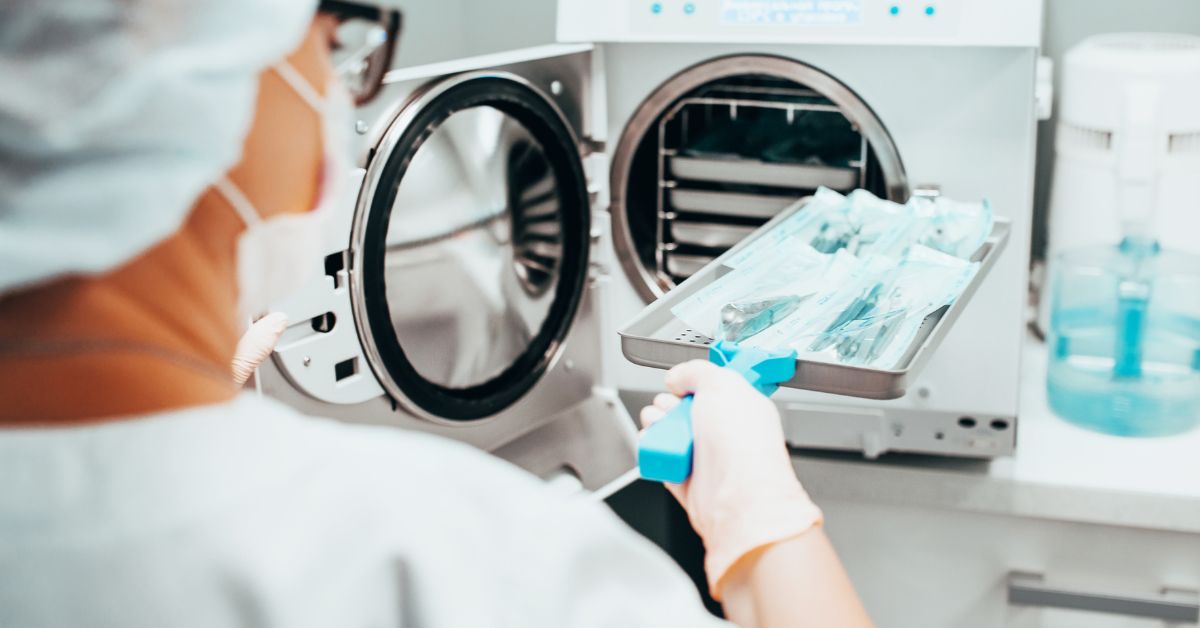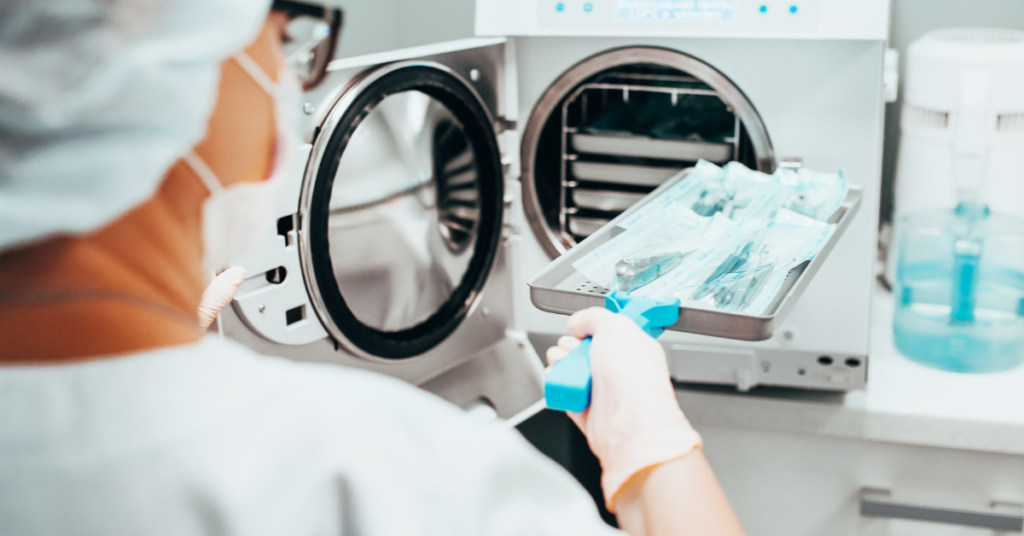All About Autoclaves: Your Lab’s no.1 Sterilization Workhorse

The unsung hero of many a laboratory, the autoclave is a vital piece of equipment for ensuring sterility. But what exactly is an autoclave, and how does it work?
In this blog post, we will explore the world of autoclaves and steam sterilizers, including their features, uses, and proper laboratory procedures. We will also delve into the field of microbiology to understand the importance of this equipment. autoclaves, sterilization, laboratory equipment, steam sterilizer, microbiology exploring their features, uses, and proper laboratory procedures.
What is an autoclave?
An autoclave, also known as a steam sterilizer, is a device that utilizes high pressure and steam to eliminate microorganisms like bacteria, viruses, and even resilient spores. These devices function by trapping steam under pressure, which significantly increases the boiling point of water within the chamber. This intense heat effectively denatures proteins and destroys the cellular structure of microorganisms, achieving sterilization.

Key Features of Autoclaves:
- Pressure Vessel: The core of the autoclave is a pressure-resistant chamber where the materials to be sterilized are placed.
- Steam Generator: This component produces the steam necessary for the sterilization process.
- Heating Elements: These elements maintain the desired temperature within the chamber.
- Control Panel: The control panel allows users to set and monitor sterilization parameters like temperature, pressure, and cycle time.
- Safety Features: Autoclaves incorporate safety features such as pressure relief valves and door locks to ensure safe operation.
The Diverse Uses and power of Autoclaves in the Lab:
- Sterilization of Labware: Flasks, test tubes, pipettes, and other glassware used in experiments can be sterilized using autoclaves.
- Media Preparation: Culture media used for growing microorganisms is routinely sterilized in autoclaves.
- Decontamination of Waste: Biological waste potentially harboring pathogens can be rendered safe through autoclaving before disposal.
- Sterilization of Instruments: Surgical instruments and other equipment used in aseptic procedures require sterilization via autoclave.
How to Use an Autoclave Safely and Effectively:
- Proper Loading: Ensure items are positioned to allow for even steam penetration. Avoid overcrowding the chamber.
- Selecting the Right Cycle: Choose the appropriate cycle parameters (temperature, pressure, and time) based on the materials being sterilized.
- Following Safety Protocols: Always wear personal protective equipment (PPE) when operating the autoclave. Never open the chamber while under pressure.
- Maintenance: Regular maintenance is crucial for optimal performance and safety.
Preparation is Key:
- Gather Your Supplies: Assemble the materials you intend to sterilize. Remember, liquids require looser caps to prevent them from boiling over. Wrap instruments in appropriate sterilization pouches.
- Choose Your Cycle: Consult your lab protocols or the autoclave manual to determine the appropriate sterilization cycle for your materials. Common factors to consider include the type of material and the presence of spores.
- Proper Loading: Strategically place your items within the autoclave chamber. Ensure they’re not crammed together and allow for adequate steam circulation. Place liquids on raised platforms to prevent scorching.
Safe Operation:

Prioritizing Safety: Essential Precautions for Using Autoclaves in the Lab
Autoclaves are undeniably workhorses in the laboratory, ensuring sterility and protecting researchers from harmful microorganisms. However, their immense power necessitates proper safety protocols to prevent accidents and injuries. Here’s a breakdown of essential lab safety practices when using autoclaves:
- Secure the Lid: Double-check that the autoclave door is properly locked and sealed before initiating the cycle.
- Start the Cycle: Using the control panel, select the pre-determined sterilization cycle. The autoclave will automatically purge air, create steam pressure, and maintain the chosen temperature for the designated time.
- Patience is a Virtue: Resist the urge to open the door prematurely. Allow the autoclave to complete the entire cycle, including the crucial cool-down phase.
Post-Sterilization Procedures:
- Maintaining Pressure: Once the cycle concludes, the pressure will gradually decrease. Wait until the pressure gauge reaches zero before carefully unlocking the door.
- Heat Warning: Exercise caution! Sterilized materials will remain hot for a while. Utilize heat-resistant gloves or tongs for handling.
- Discarding Waste: Dispose of any biohazardous waste generated during the autoclaving process according to your lab’s designated protocols.
Remember: Safety always comes first. Never attempt to force open a locked autoclave door or tamper with safety features. Report any malfunctions or irregularities to the designated personnel immediately.
By following these steps and adhering to established safety protocols, you can ensure the successful and safe sterilization of your laboratory materials using the mighty autoclave. Happy autoclaving!
Conclusion
Safety is the highest priority of any laboratory activity.” – This emphasizes the paramount importance of safety in all lab procedures, including autoclaving.
“An ounce of prevention is worth a pound of cure.” – This proverb applies to lab safety as well. Taking precautions with autoclaves can prevent accidents and injuries.
Safety first, science follows. Autoclave with caution, the rewards are aseptic!”
Autoclaves are essential tools in laboratories, safeguarding personnel and ensuring the integrity of experiments by eliminating microorganisms. By understanding their features, uses, and proper procedures, you can ensure the effective and safe operation of this vital lab equipment.
- The Power of Advanced Filtration and Purification Systems in Chemistry Labs
- Chemistry vs. Biology Lab Equipment: What Sets Them Apart? Lab Equipment Used in Chemistry and Biology.
- The Future of Infectious Disease Diagnostics: Cutting-Edge Lab Equipment
- The Importance of Lab Equipment in Biotechnology
- Mastering the Miniature: A Guide to Micropipettes



